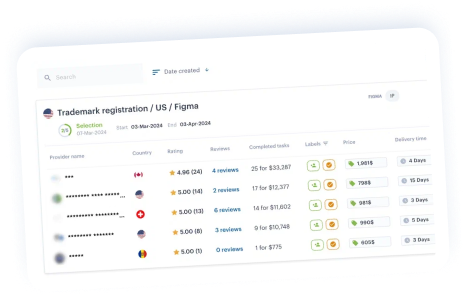By Taeyoung Lee, LNB Law Firm
The Republic of Korea is a thriving and dynamic country with a highly developed economy and strong industrial base. It is also known for its innovative and entrepreneurial culture, which has led to the emergence of many successful startups and small businesses. With a population of over 50 million people, South Korea offers a large and growing market for businesses looking to expand their operations.
Patent registration is an important step for inventors and businesses seeking to protect their intellectual property rights in the Republic of Korea. In this article, we will provide an overview of the patent registration process in Korea, including the eligibility criteria for patent protection, the application process, and the examination and issuance of patents.
Contents
1. What is a patent for an invention?
2. What can and cannot be patented in the Republic of Korea?
3. What documents are required to register a patent in South Korea?
4. Patent registration procedure in the Republic of Korea
5. The cost of a patent registration in the Republic of Korea
1. What is a patent for an invention?
A patent for an invention is a legal document granted by a government that gives the inventor exclusive rights to prevent others from making, using, selling, and importing an invention for a limited period of time.
In exchange for this exclusive right, the inventor must publicly disclose the details of the invention in a patent application, which becomes a part of the public record. Patents are intended to encourage innovation by providing inventors with a means to protect and profit from their ideas, while also promoting the dissemination of knowledge and ideas to the public.
Either the inventor of an invention or their assignee can file a patent application for the invention with the Korean Intellectual Property Office (KIPO). The applicant may be either a private or legal entity. The term of a patent commences when the establishment of patent right is registered and ends 20 years after the filing date of the patent application.
2. What can and cannot be patented in the Republic of Korea?
To obtain patent rights in South Korea, the invention must meet the following criteria:
- The invention must have industrial applicability, meaning that it can be used in an industrial setting.
- The invention must be novel, which means that it is not known to the public (i.e., prior art) before the application is filed.
- The invention must involve an inventive step, meaning that it is not easily deducible from prior art, despite any differences between the two.
Certain inventions are deemed unpatentable in South Korea, such as:
- Inventions that are likely to contravene public order or morality. Public order refers to the general interest of society or the country, while morality encompasses the moral sense generally accepted by society or a particular group of people.
- Inventions that could potentially harm public hygiene.
3. What documents are required to register a patent in South Korea?
You will need the following documents to file an application for a patent in South Korea:
- an application stating the name and address of the inventor and applicant, the title of the invention, and priority data (if the right of priority is claimed);
- a specification including the title of the invention, a brief description of drawings (if any), a detailed description of the invention and claim(s);
- drawing(s), if any;
- an abstract;
- a certified copy of the priority application along with its Korean translation is necessary when claiming the right of priority. This priority document may be submitted within 16 months from the priority date.
- a power of attorney, if necessary.
The official language of a patent registration is Korean. The application may be filed in English; however, its translation into Korean should be submitted within 14 months from the earliest priority date.
In order to enjoy the priority right, you must file an application in the Republic of Korea within 1 year from the filing date of the priority application. The time limit for the PCT national phase entry in Korea is 31 months from the date of priority. These terms cannot be extended.
4. Patent registration procedure in the Republic of Korea
The process of patent registration in South Korea involves several steps, including search, application, examination, opposition, and granting.
Before filing a patent application in South Korea, it is important to conduct a thorough prior art search to ensure that the invention meets the criteria for novelty and inventive step. This can be done by conducting a search of relevant databases or hiring a professional patent attorney.
Once the prior art search is completed, the next step is to file a patent application with the Korean Intellectual Property Office (KIPO). The application must include a detailed description of the invention, claims, and any necessary drawings.
After the application is filed, KIPO will conduct an examination to determine whether the invention meets the requirements for patentability. This may include a review of prior art, a search for similar inventions, and an evaluation of the inventive step of the invention.
If the application is approved by KIPO, it will be published in the Official Gazette. A patent application will be taken up for examination only if the applicant or an interested party makes a request for examination within 3 years from the filing date.
During the two-month period following publication, anyone may file an opposition against the application. The opposition must be based on the grounds of lack of novelty or inventive step, or on the basis that the invention is unpatentable. If an opposition is filed, KIPO will notify the patent holder and give them an opportunity to submit a response. If a response is filed, KIPO may conduct further examination or request additional information or evidence from both parties. Also read our guide about patent registration process to secure your IP rights.
If there is no opposition or if the opposition is unsuccessful, KIPO will grant the patent. When a patent applicant receives a notice of decision to grant a patent, he or she should pay the first 3 years’ annuities within 3 months as a registration fee. Once the patent is granted, the owner has exclusive rights to make, use, sell, and import the invention in the Republic of Korea for a period of 20 years from the date of filing the application.
The patent registration process in South Korea typically takes around 2-3 years to complete, and it can be quite complex and time-consuming. Therefore, it is highly recommended to seek the guidance of a qualified patent attorney to ensure that the process goes smoothly and the resulting patent is enforceable.
5. The cost of a patent registration in the Republic of Korea
| Application | Basic fee |
| Standard (electronic) | 46,000 KRW |
| Extending the term | 300,000 KRW |
| Examination | |
| Application for a priority claim | 18,000 KRW |
| 18,000 KRW |
| Request for substantive examination | 143,000 KRW |
| 44,000 KRW |
| Annual Fees | |
| 1 to 3 years (Grant fee is included) | 15,000 KRW |
| 13,000 KRW |
| 4 to 6 years | 40,000 KRW |
| 22,000 KRW |
| 7 to 9 years | 100,000 KRW |
| 38,000 KRW |
| 10 to 12 years | 240,000 KRW |
| 55,000 KRW |
| 13 to 15 years | 360,000 KRW |
| 55,000 KRW |
| 16 to 25 years | 360,000 KRW |
| 55,000 KRW |
The patent registration cost in the Republic of Korea via the iPNOTE platform starts from as low as $830, which includes all government fees as well as document preparation. Find the best patent agent in the Republic of Korea on iPNOTE.
6. Final thoughts
Obtaining a patent for an invention in South Korea can be a complex process, but it is necessary to protect your inventions and business interests. By working with experienced patent attorneys and staying up-to-date on the latest laws and regulations, you can increase your chances of getting a patent and protecting your intellectual property in South Korea.
***
Any questions about IP matters in South Korea? Contact LNB Law Firm via iPNOTE now.
The iPNOTE platform features more than 700 IP law firms that cover more than 150 countries, so you can always find the right direct service provider using our flexible filtering system.
Look at our directory of patent attorneys in the Republic of Korea.
Sign up for free, and we’ll help you solve any IP-related problem.
Ensure the authenticity of your brand with trade mark registration. Plus, conduct a thorough patent search to safeguard your innovations. Trust our expertise for comprehensive intellectual property protection.




















































